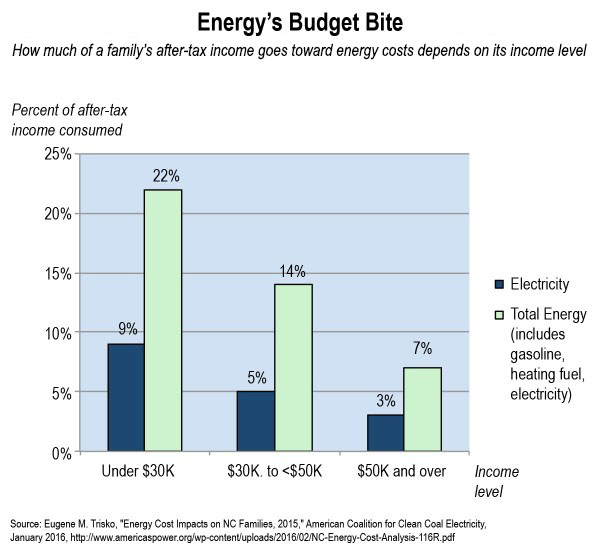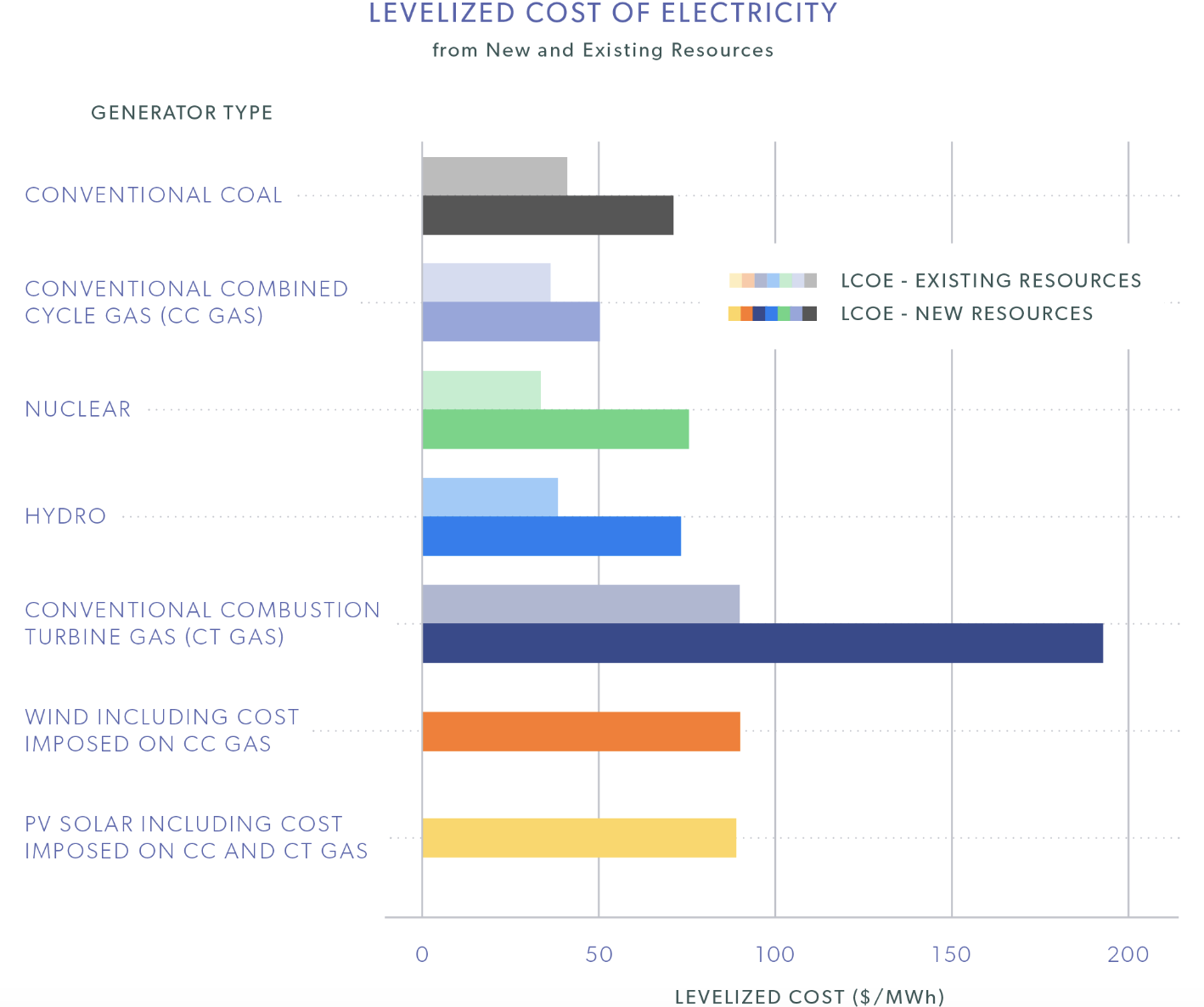Here’s a graph for you. Further down I’ll explain what it means:
But first, yesterday’s edition of The News & Observer had an op-ed from UNC-Chapel Hill research professor David N. McNelis on “The high cost of ignoring nuclear energy.”
McNelis argues that nuclear energy is a highly efficient source of electricity that has zero emissions and therefore should not be endangered by the state’s renewable energy portfolio standards (REPS) mandate.
Giving first priority to power from sun and wind leads to perverse and, I would hope, unintended consequences. Witness the announced shutdowns of nuclear plants in other states with renewable electricity standards – Wisconsin, Vermont, Massachusetts, New York, and California. Since 2012, thanks to generously subsidized solar and wind power and low-cost natural gas, electric utilities have closed or announced plans to shut down 13 power reactors – and as many as 20 other reactors are considered at high risk of being shuttered, despite their crucial role in providing electricity reliably and reducing carbon emissions. This is public policy crafted void of critical facts.
In McNelis’ view, “The first step toward sensible energy policy is to replace the state’s renewable electricity standard with a clean electricity standard that includes nuclear energy.”
I disagree with McNelis somewhat. The first step toward sensible electricity policy in North Carolina is bringing back our former standard of least-cost, reliable power.
The top priority for electricity policy in North Carolina — where consumers are given no choice in who provides them electricity — absolutely must be keeping consumers’ costs as low as possible. McNelis’ “high cost” doesn’t even include REPS’ deleterious effects on consumer rates.
What that graph means
McNelis’ concern about unintended consequences of mandating and incentivizing expensive, intermittent, and inefficient sources of wind and solar — those consequences being prematurely shutdowns of working, highly efficient nuclear power plants — is reflected in the above graph. Let’s talk about that now.
The graph is from an important new report from the Institute for Energy Research. This report compares the levelized cost of building new power plants along with the levelized cost of retaining current, working power plants.
The first part is a familiar comparison. The second part is a crucial addition to the conversation: shutting down working power plants has significant opportunity costs that responsible policymakers should be aware of.
How crucial is this addition? This crucial:
- Electricity from new solar is nearly 5 times more expensive than from existing nuclear and over 3.5 times more expensive than from existing coal.
- Electricity from new wind is over 3.5 times more expensive than from existing nuclear and over 2.5 times more expensive than from existing coal.
“Much of our existing coal and nuclear fleet could continue to provide affordable, reliable electricity for decades to come if not for policies like the Obama administration’s carbon regulations or the deal struck in California to shut down Diablo Canyon,” said IER President Thomas Pyle.
“Unnecessarily shutting down our existing generation in favor of expensive and intermittent wind and solar power means Americans will be left with higher electricity bills and less money in their pockets. This will have the harshest impact on poor and middle class families who spend more of their hard-earned money on energy costs. This study adds a much-needed reality check to the debate over our nation’s electricity policy.”
About that ‘harshest impact on poor and middle class families’…
Arbitrarily forcing higher prices on electricity is no small matter. Electricity isn’t a luxury good. It is a basic human need. We all need it; we’re all buying it. That’s why raising electricity rates will have such a harsh impact on the poor.
Here’s one more graph on that point. It shows just how expensive energy costs in general, and electricity costs in particular, are for people in North Carolina, especially the poor.
In 2015, electricity costs to the poorest North Carolina households (those earning less than $30,000 per year) averaged 9 percent of their after-tax income. Add in gasoline costs and home-heating costs, and energy costs consumer nearly a quarter of their after-tax income.




